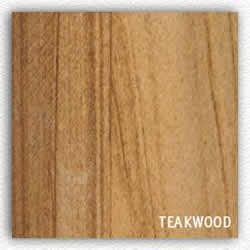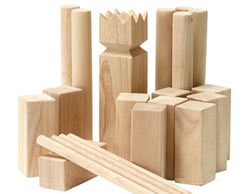Difference between Teak Wood and Rubber Wood
Key difference: Teak wood is a type of hardwood. It is essentially sourced from the Tectona grandis tree species, which is native to south and southeast Asia, mainly India, Indonesia, Malaysia, Thailand and Burma. As a wood, teak has a smooth grain and texture. It has a yellowish brown hue, which may mature overtime to a silvery-grey finish. In fact, teak is famous for its high oil content, high tensile strength and tight grain. Rubberwood is essentially the wood that comes from the rubber tree, the Pará rubber tree to be specific. The Pará rubber tree is scientifically known as Hevea brasiliensis. As the wood of a rubber tree, one would expect it to be soft and springy like, well, rubber. However, rubberwood is essentially a hardwood.
 Teak wood and rubber wood are both types of hardwoods. Hardwood is the wood that comes from an angiosperm tree. This is a type of tree that has seeds that are enclosed, be it in pods, a shell, a covering or in fruit. For example, apples or nuts and seeds like acorns and walnuts. These types of seeds allow birds and insects to be attracted to the flowers of the tree and be able to carry the pollen to other trees. This is also the reason why hardwood trees are not often bunched together but are spaced apart and often have other trees in-between them. (See Timber Vs. Lumber)
Teak wood and rubber wood are both types of hardwoods. Hardwood is the wood that comes from an angiosperm tree. This is a type of tree that has seeds that are enclosed, be it in pods, a shell, a covering or in fruit. For example, apples or nuts and seeds like acorns and walnuts. These types of seeds allow birds and insects to be attracted to the flowers of the tree and be able to carry the pollen to other trees. This is also the reason why hardwood trees are not often bunched together but are spaced apart and often have other trees in-between them. (See Timber Vs. Lumber)
Most hardwood trees are also deciduous is nature. A deciduous tree is a tree that loses its leaves annually. Hardwood trees are also slower to grow, taking their own time. Due to this, most hardwood is dense. This is also the reason that hardwood is expensive, as it takes longer to grow. Some famous hardwoods include maple, balsa, oak, elm, mahogany, and sycamore.
Teak wood is essentially sourced from the Tectona grandis tree species, which is native to south and southeast Asia, mainly India, Indonesia, Malaysia, Thailand, and Burma. However, due to the high demand for teak wood, the Tectona grandis is also grown on plantations in Africa and the Caribbean. Still, Burma accounts for almost one-third of the teak in the world, hence teakwood is also at times referred to as Burmese Teak. Regionally, teakwood is known as 'Segun' in Bengali and as ‘Sagwan’ in most of India. (See: Oak Vs. Teakwood).
As a wood, teak has a smooth grain and texture. It has a yellowish brown hue, which may mature overtime to a silvery-grey finish. In fact, teak is famous for its high oil content, high tensile strength, and tight grain. Due to the high oil content, teak is known to durable even when it is not treated with oil or varnish. It is due to this oil content that teakwood has a leather-like smell when it is freshly milled. Teak is also resistant to timber termite and other pests. It also has a low shrinkage ratio, which means that the wood can be used in areas with high or fluctuating moisture content. However, teak contains silica in the wood, which may lead to severe blunting on edged tools. Due to this, only the most experienced woodworkers use teak.
Teak is often used to make furniture, especially countertops, as well as indoor flooring, veneer, carving, turnings, and other small wood projects, such as cutting boards. Teak is also commonly used to make doors, window frames, and columns and beams.
Furthermore, because of its high oil content, it is also often used to make outdoor furniture, as the wood’s natural oils make it resistant to water, as well as to rot, fungi and mildew. This has also allowed teak to be used for boat building, boat decks, etc.
As a hardwood, teak is sourced from slow growing trees. The high-quality teak is sourced from trees are that are at least 50 years old. The teakwood can be sourced from trees that are younger in age, but this timber is not considered to be of high quality.
 Rubberwood is essentially the wood that comes from the rubber tree, the Pará rubber tree to be specific. The Pará rubber tree is scientifically known as Hevea brasiliensis. As the wood of a rubber tree, one would expect it to be soft and springy like, well, rubber. However, rubberwood is essentially a hardwood. (See: Rubberwood Vs. Hardwood).
Rubberwood is essentially the wood that comes from the rubber tree, the Pará rubber tree to be specific. The Pará rubber tree is scientifically known as Hevea brasiliensis. As the wood of a rubber tree, one would expect it to be soft and springy like, well, rubber. However, rubberwood is essentially a hardwood. (See: Rubberwood Vs. Hardwood).
The Pará rubber tree is essentially grown in plantations for the latex it produces, which is then harvested and used in the production of commercial rubber. However, after 25 – 30 years, the production of latex in the tree becomes very low; hence the tree is often cut down and replaced with another, which would be more financially viable.
Previously, the felled rubber tree would be burned, as there would be no further use for it. However, in lieu of growing environmentalism, the wood from the felled rubber tree is now recycled and used in various applications. The most common applications of the rubberwood include furniture, toys, and kitchen accessories. Like all hardwoods, rubberwood comes in varying degrees of quality.
The advantage of rubber wood is that it s a dense grain that is easily controlled in the kiln drying process. This makes is easily manageable in the kitchen. However, rubberwood is not suitable for outdoor usage. Furthermore, rubberwood is touted over other types of wood because as it is essentially a recycled wood, it is more eco-friendly. (See: Pinewood Vs. Plywood)
Image Courtesy: eurasian.com, europack.co.in









Add new comment